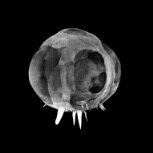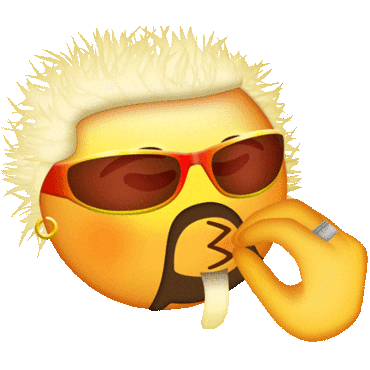-
Posts
9 -
Joined
-
Last visited
Content Type
Profiles
Forums
Events
Everything posted by leecrawford19
-

Return to Monkey Island 🚨GAME-WIDE🚨 Spoiler Chat
leecrawford19 replied to Jake's topic in General Discussion
To be honest I solved the puzzle totally by accident. After the door opened I decided to load a save and check the hint book to see what the actual answer was 😂- 703 replies
-
- return spoilers
- late game
-
(and 1 more)
Tagged with:
-

Return to Monkey Island 🚨GAME-WIDE🚨 Spoiler Chat
leecrawford19 replied to Jake's topic in General Discussion
The stone doors you open on the way down each have an inscription (2 half faces and a year). You dial in these as the starting positions on the wheel. You then use the stone tablet in the lava to figure out how many times to turn each dial.- 703 replies
-
- 1
-

-
- return spoilers
- late game
-
(and 1 more)
Tagged with:
-

Return to Monkey Island 🚨GAME-WIDE🚨 Spoiler Chat
leecrawford19 replied to Jake's topic in General Discussion
what he said.- 703 replies
-
- 2
-

-
- return spoilers
- late game
-
(and 1 more)
Tagged with:
-

Return to Monkey Island 🚨GAME-WIDE🚨 Spoiler Chat
leecrawford19 replied to Jake's topic in General Discussion
I have always felt there were dark undercurrents to those first 2 games. The surreality of the last section of MI2 always seemed like it was the visual and experiential representation of a mind finally uncovering a long buried trauma (notably this section takes place BENEATH the buried treasure chest that ostensibly is Big Whoop). The reveal of young Guybrush and Chucky at the amusement park, now followed by the reframing of this scene in the prologue of RTMI, can therefore be seen as the mind’s desperate attempt to reestablish the fantasy. You can even take this further and use it to explain some of the other odd occurrences and aspects of RTMI. Much has been made about how, beyond Melee and Monkey Island, the rest of the islands and locations in the game feel somewhat sparse and rushed with little to see and do. If you approach these issues from the point of view of a troubled man (Guybrush) desperately trying to maintain a fantasy that is quickly breaking down, it suddenly makes sense why these areas lack sufficient fleshing out. I feel this whole game is a rabbit hole that is very easy to get lost in.- 703 replies
-
- 3
-

-

-
- return spoilers
- late game
-
(and 1 more)
Tagged with:
-

Return to Monkey Island 🚨GAME-WIDE🚨 Spoiler Chat
leecrawford19 replied to Jake's topic in General Discussion
I see a lot of comments about how all the cutaways to Elaine discovering the bad things that Guybrush did didn’t really have a payoff and that Elaine simply hand waves it all away. I’d argue that, if you take the idea that Guybrush uses the Elaine character as a kind of therapist figure, their slow walk to the Monkey Head makes perfect sense. A therapist helps us to confront aspects of ourselves we might not want to face, as Elaine does in this scene, but the crucial point is that they DO NOT judge.- 703 replies
-
- 3
-

-
- return spoilers
- late game
-
(and 1 more)
Tagged with:
-

Return to Monkey Island 🚨GAME-WIDE🚨 Spoiler Chat
leecrawford19 replied to Jake's topic in General Discussion
I feel that this interpretation has the benefit of accounting for events across the whole monkey island saga and allows me to actually enjoy the games that previously left a bad impression. CMI’s botched explanation for the ending of MI2 and its ridiculous imagery of roller coasters coming out of the monkey head are less problematic now that I can view them as the results of a troubled mind frantically struggling to maintain a fantasy. Like you say, the feeling I got of Guybrush on the bench was one of sadness, almost despair. The sense that something incredibly vital was about to change in his reality. It’s the same feeling I got at the end of MI2 30 years ago. Something is wrong and he is so hopelessly ill equipped to deal with it. The scene of a confused Guybrush, little more than a flooring inspector, wandering around the amusement park as he shuts it down and turning to Elaine for reassurance was pretty devastating.- 703 replies
-
- 3
-

-

-
- return spoilers
- late game
-
(and 1 more)
Tagged with:
-

Return to Monkey Island 🚨GAME-WIDE🚨 Spoiler Chat
leecrawford19 replied to Jake's topic in General Discussion
My current thinking is a bit on the darker side. I see Guybrush as a man with very severe issues who has lost himself in this endless fantasy of Monkey Island and the rivalry with his nemesis LeChuck. The ending of Monkey Island 2 was ALMOST the point at which the illusion was broken, but he instead created an even deeper fantasy that we see in the prologue of Rtmi. I think his son and his friends do not exist, they are merely extensions of his own personality that revels in the stories of pirates and adventures and act as a conduit for him to become lost yet again in his fantasy. I mentioned in a different comment that Elaine, in certain sections of the story, acts almost like a therapist, guiding him along to face certain truths about himself. Her very peculiar behaviour when (and if) you choose to leave the amusement park is almost like she is waiting for Guybrush to make the choice to step out of the delusion. I find the scene on the bench at the end striking in that it seems like it’s the final moment of truth. Guybrush is almost free, but there is a final test. Elaine whispers about a hidden treasure and the promise of adventure. Then Guybrush is sat alone (maybe he was always alone). Does he finally break free of the fantasy, or does he cave in and meet Elaine at the dock? I guess that’s for us to decide.- 703 replies
-
- 7
-

-

-
- return spoilers
- late game
-
(and 1 more)
Tagged with:
-

Return to Monkey Island 🚨GAME-WIDE🚨 Spoiler Chat
leecrawford19 replied to Jake's topic in General Discussion
Or hinting that LeChuck and Guybrush might be two sides of the same personality trying to reconcile itself. Elaine’s character acts almost as a therapist in certain parts of this game, guiding Guybrush to face up to aspects of himself in order to help him escape the seemingly cyclical nature of the fantasy he continually allows himself to fall into.- 703 replies
-
- 3
-

-
- return spoilers
- late game
-
(and 1 more)
Tagged with:
-

Return to Monkey Island 🚨GAME-WIDE🚨 Spoiler Chat
leecrawford19 replied to Jake's topic in General Discussion
That was my initial reaction, but on reflection I feel it’s a difficult point of view to defend. Though there are technically several endings, every single one of them develops from Guybrush finding himself in the amusement park created in 1989. This seems to unequivocally establish that Guybrush exists in modern times (or some kind of time travel is involved). The other possibility is that you accept that in this world things like amusement parks, electricity, vending machines, roller coasters, robots and every other anachronism we’ve seen in the series exist during the time of pirates. There’s certainly room for interpretation, but I think the game makes very definitive and explicit decisions regarding its meaning when it comes to the reality of the world Guybrush inhabits.- 703 replies
-
- return spoilers
- late game
-
(and 1 more)
Tagged with:

